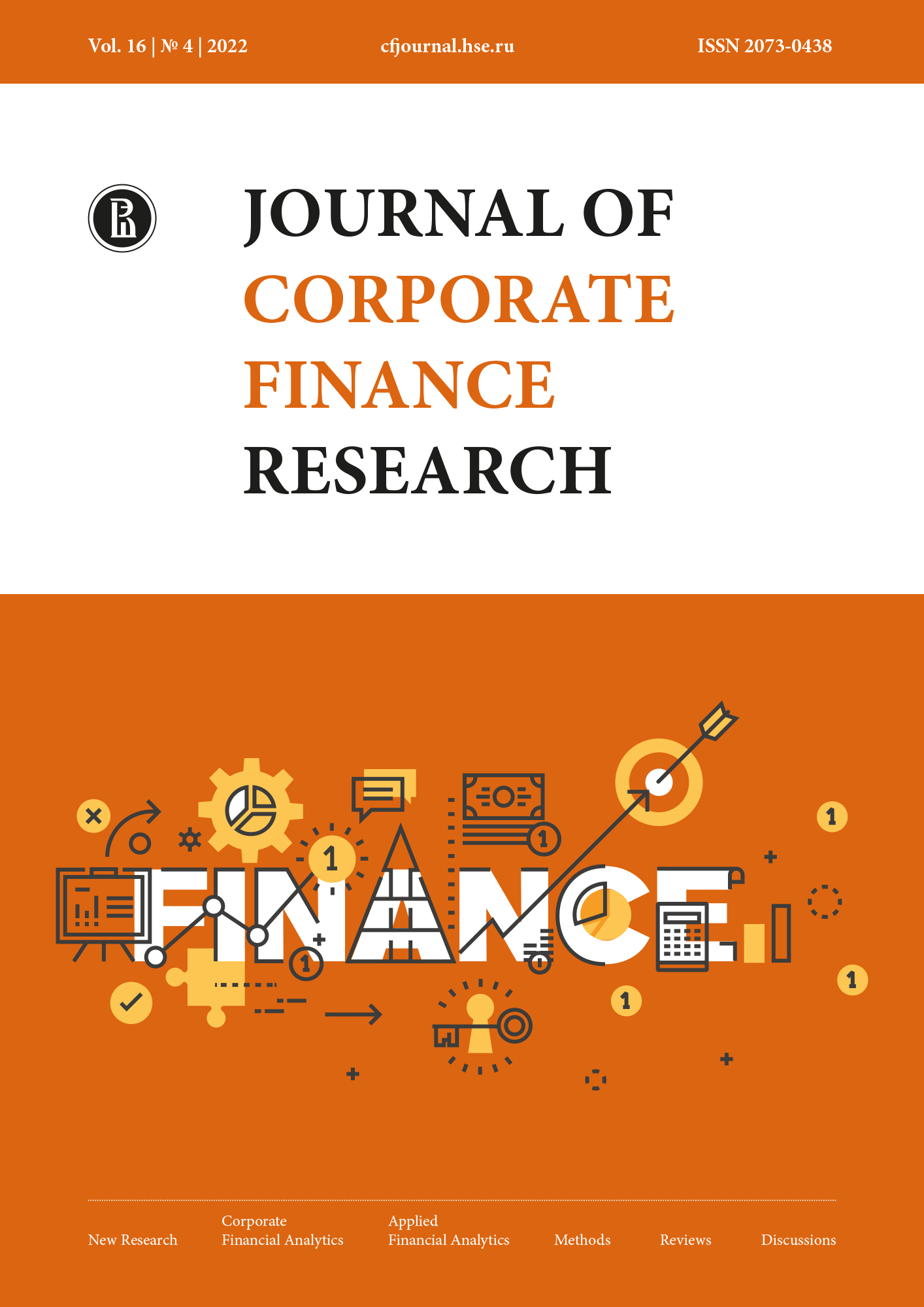How Does CEO’s Human Capital Influence Innovation Strategy of Russian Banks?
Abstract
The paper evaluates influence of human capital of top management on innovation strategy on the basis of study of innovation activity of Russian commercial banks in the period of 2017–2019. We have compiled a rating of commercial banks for retail segment innovations, selected the four least innovative banks. We have studied the key indicators of human capital of top management in eight chosen banks. The paper has revealed the interrelation between different elements of human capital of top management and innovation strategies of Russian commercial banks. We have defined personal traits which portray a manager who exerts influence on innovations in a company.
The paper is intended for investors in emerging markets which try to understand the evaluation mechanisms of impact of the financial companies’ current management on their future development path, for analysts engaged in forecasting trends related to optimization and automation in retail banking and assessment of corporate innovative capacity.
Downloads
References
Soda G. The management of firms alliance network positioning: Implications for innovation. European management Journal. 2011;29:388–388. DOI: https://doi.org/10.1016/j.emj.2011.03.004
Chiua J., Chenb C. Knowledge capital, CEO power, and firm value: Evidence from the IT industry. The North American Journal of Economics and Finance. 2019;55:1–13. DOI: https://doi.org/10.1016/j.najef.2019.101012
Li-fa T., Su-ying G., Shu-ming Z. The Interactive Mechanism of Human Capital and Innovative Strategy on Corporate Performance & Its Empirical Analysis. International Conference on Management Science & Engineering (17th). November 24–26, 2010. DOI: https://doi.org/10.1109/ICMSE.2010.5719831
Gault F. Innovation Strategies for a Global Economy: Development, Implementation, Measurement and Management. International Development Research Centre. Edward Elgar; 2010. 38 p. DOI: https://doi.org/10.4337/9781849806725.00020
IBM Institute for Business Value. Lessons from the world’s leading innovators. Innovating banking; 2015.
Kaplan S. The Complete Guide to Innovation Metrics – How to Measure Innovation for Business Growth. 2010.
Aase G., Roth E., Swaminathan S. Taking the measure of innovation. McKinsey Quarterly, 2018.
Шохин А.Н. Бизнес и власть в России. М.: Изд. дом ВШЭ, 2017.
Squicciarini M. P., Voigtländer N. Human capital and industrialization: Evidence from the age of enlightenment. The Quarterly Journal of Economics. 2015;130(4):1825–1883. DOI: https://doi.org/10.1093/qje/qjv025
Zhang H., Ou A. Y., Tsui A. S., Wang H. CEO humility, narcissism and firm innovation: A paradox perspective on CEO traits. The Leadership Quarterly. 2017;28(5):585–604. DOI: https://doi.org/10.1016/j.leaqua.2017.01.003
Bantel K. Top management and innovations in banking: does the composition of the top team make a difference? Strategic Management Journal. 1989;10:107–124. DOI: https://doi.org/10.1002/smj.4250100709
Subramaniam M., Youndt M. The Influence of Intellectual Capital on the Types of Innovative Capabilities. Academy of Management Journal. 2005;48(3):450–463. DOI: https://doi.org/10.5465/amj.2005.17407911
Shuying W., Shuijuan Z., Li Bobo. Effect of diversity on top management team to the bank’s innovation ability-based on the nature of ownership perspective. 13th Global Congress on Manufacturing and Management, GCMM. 2016. DOI: 10.1016/j.proeng.2017.01.126 DOI: https://doi.org/10.1016/j.proeng.2017.01.126
Crossland C., Zyung J., Hiller N., Hambrick D. CEO career variety: effects on firm-level strategic and social novelty. Academy of Management Journal. 2014;57(3):652–674. DOI: https://doi.org/10.5465/amj.2012.0469
Sariol A., Abebe M. The influence of CEO power on explorative and exploitative organizational innovation. Journal of Business Research. 2017;73(C):38–45. DOI: https://doi.org/10.1016/j.jbusres.2016.11.016
Faleye O., Kovacs T., Venkateswaran A. Do Better-Connected CEOs Innovate More? Journal of financial and quantitative analyses. 2014;49(5/6):1201–1225. DOI: https://doi.org/10.1017/S0022109014000714
Dahmsa S., Cabrilob S., Kingkaew S. The role of networks, competencies, and IT advancement in innovation performance of foreign-owned subsidiaries. Industrial marketing management. 2020;89(8/9): DOI: 10.1016/j.indmarman.2020.03.013 DOI: https://doi.org/10.1016/j.indmarman.2020.03.013
Dost M., Yuosre F. B., Zeeshan A., Adeel T. The impact of intellectual capital on innovation generation and adoption. Journal of Intellectual Capital. 2016;17(4): DOI: 10.1108/JIC-04-2016-0047 DOI: https://doi.org/10.1108/JIC-04-2016-0047
Pérez-Luño A., Gopalakrishnan S., Cabrera R. V. Innovation and performance: the role of environmental dynamism on the success of innovation choices. IEEE Transactions on Engineering Management. 2014;61(3):499–510. DOI: https://doi.org/10.1109/TEM.2014.2318085
Copyright (c) 2022 National Research University Higher School of Economics

This work is licensed under a Creative Commons Attribution-NonCommercial-NoDerivatives 4.0 International License.

